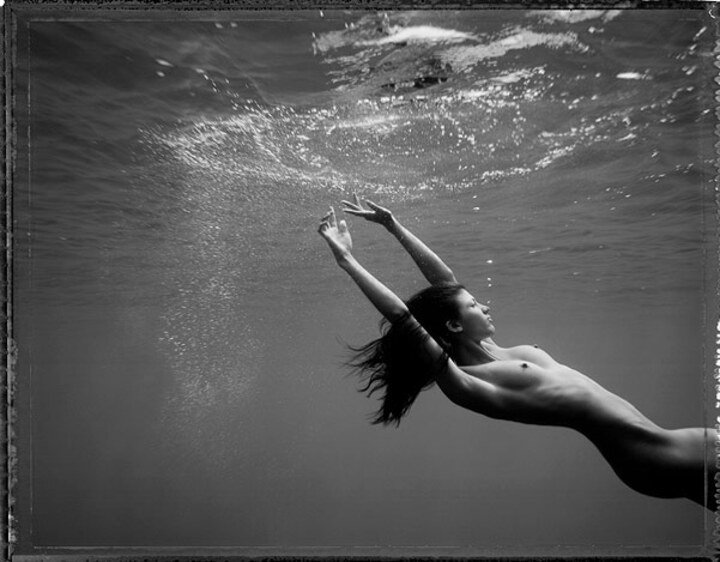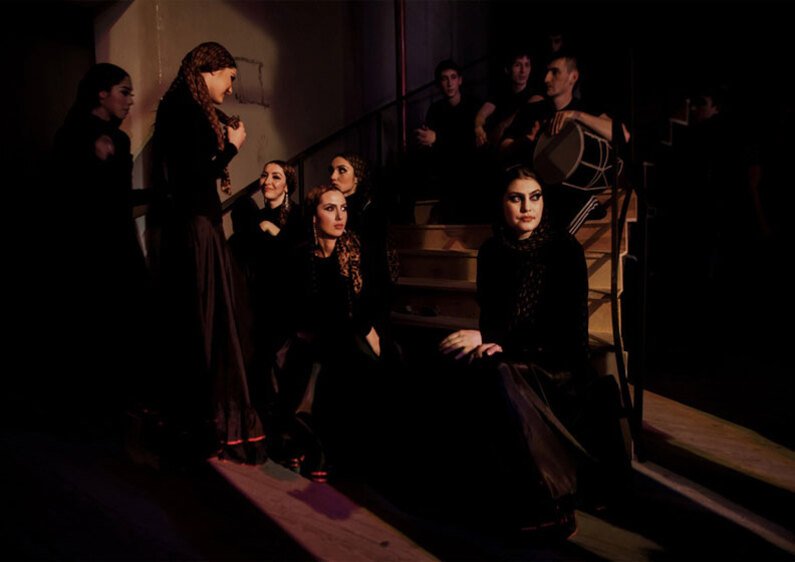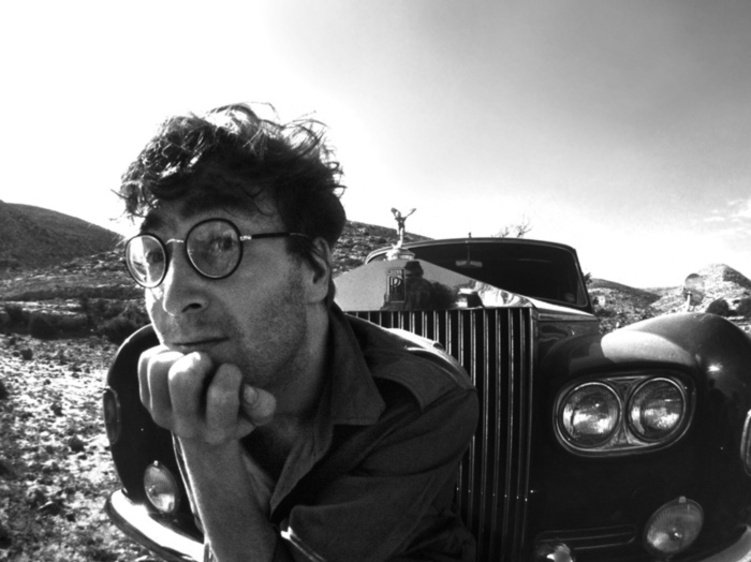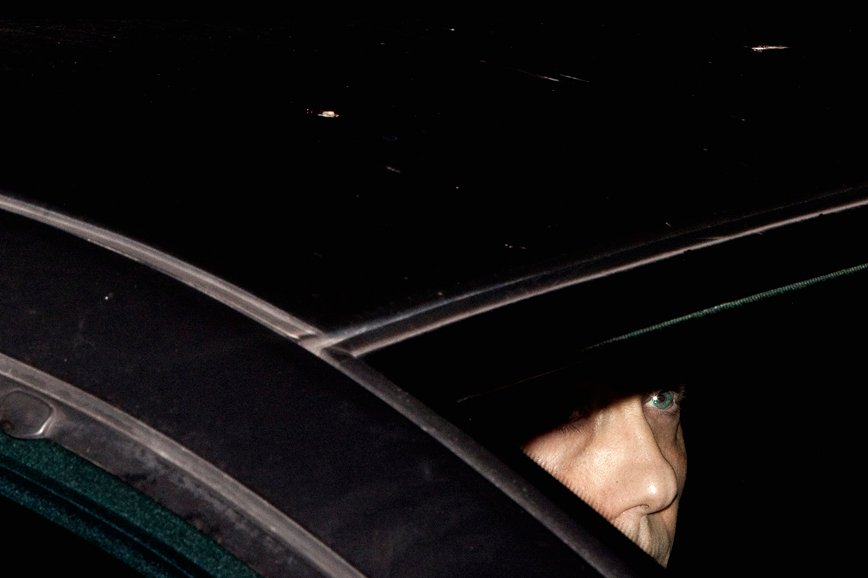U.S.A – Hossein Farmani lends himself to the very forefront of the arts community; his passions have led him to found some of the most respected companies in the art world. The most popular include: International VUE, FotoFolio, Focus on Aids (FOA) Foundation and, of course, the world-renowned LUCIE Awards that are now synonymous with some of the greatest triumphs in photography today.
In endeavors of his own choosing, Hossein proves time after time, that a worthy idea and hard work can result in great satisfaction and accomplishment. Manik Katyal, Editor-in-Chief of EMAHO, talks with him about his greatest successes and future contributions to the industry.
Manik: A photographer, a creative entrepreneur, a publisher and a collector, which of these roles do you enjoy the most and how do you balance each one of them?
Hossein: I think collecting is the most enjoyable thing I do. It involves buying which I love doing! It’s a great thing; it’s definitely the most fun I have.
Manik: Starting with your journey from “International VUE” to the many prestigious awards, charities, foundations and festivals that you have developed over the years, which has been the most formative experience for you?
Hossein: Creating the Lucie Awards has definitely been the highlight. Purely just the fact that I created something the whole photographic industry could embrace and make their own, it became so huge in such a short time – it has really been the highlight amongst all the things that I have done. Also, the Focus on AIDS foundation that I started has really, really helped me be where I am today within the photography world. So those two are really important to me.
 Graham Howe © Color Theory—RGB Cup and Saucer, 1984
Graham Howe © Color Theory—RGB Cup and Saucer, 1984
Manik: Paris, London, Cambodia, and Myanmar – you have nurtured, promoted & given incentive to different photographic platforms across geographic borders. What are the challenges of setting up a photographic platform in another country?
Hossein: It’s always a big challenge when you walk into another country. You are a foreigner that arrives wanting to do something on a big scale, and they’re always wondering why you? Why can’t we do it ourselves? So it’s always a challenge – you don’t have the resources, you don’t have the knowhow to bring it together, there is always that initial challenge of ‘why are you doing this in our country?’ That’s the main thing to overcome and once you overcome that, people realize that you are not here to make money from them, you are here to actually help them set it up. What I do basically is to make sure that they run it, the whole idea is that I’ll help you start it and you have to run it yourself. Once they have understood we are not there to make money from them, we are there to start something new and exciting and share the same passion then I think usually they become more receptive to it. Suspicion is raised in countries like South East Asia; it’s very, very hard to get the locals involved and getting the masses to come because they aren’t used to hanging out with foreigners. Only the photographers who have been exposed to international meetings are the ones that will actually easily come. So there are many challenges in starting something in a foreign country as opposed to if you start something in America – people know you, they are actually much more open to the idea of festivals, much more open to exhibitions and people come because they are used to it.
Manik: What drove you to so passionately to create not one but multiple platforms of creative expression in photography? Was it the awareness of the shortage of opportunities, or the lack of organization in other photographic communities?
Hossein: There are people who believe in their religion so strongly that they spend most of their time as missionaries and promoting it, so if you can imagine photography becoming this religion for me. It has changed and enriched my life so much, it’s an art form that I love and I think besides the taking of good pictures it’s a very important communication tool. When we go to smaller countries like Cambodia or Burma, we encourage people to take photographs and then we exhibit the photographs, so we as people become more aware. It helps develop people’s mindset and for those in different countries to appreciate the international market.
 Cedric Arnold © Monks
Cedric Arnold © Monks
Manik: Now you have opened another gallery in Bangkok, what is your vision behind the Farmani gallery?
Hossein: There is no market for buying and selling photography, at least at this point of time in Bangkok. So my goal was mainly to bring in international photographers to Bangkok, show their work and if possible discover other photographers to also bring the standard of photography in Bangkok to reach out to a more international level. There are some really great photographers here that I have discovered, and they just need a little help to reach the international standard and market. So the goal is to have a place where young people can curate their own show locally and for me to bring in International photographers and showcase their work. It will just bring the appreciation of photography to a new level in Bangkok.
Manik: And if I ask you why Bangkok?
Hossein: I fell in love with this country because of the kindness of its people and the smiling faces that they are famous for and their rich food. It’s a great place where I wanted to spend more time. Also it’s kind of central in Southeast Asia, so it’s easy for me to travel to other countries from Bangkok.
Manik: So shall we expect another festival in Bangkok organized by you?
Hossein: I am hoping I can help a few friends here with their ideas of starting a Bangkok International Photo Festival – hoping to help them so that I don’t have to start one myself. But if they don’t succeed in putting it up themselves, then I will definitely do it.
Manik: When can we expect it?
Hossein: What I’m doing right now is taking a back seat just to see which partners will actually produce the event without all of my help but as much as I can support, so possibly 2014 or 2015.
Manik: So the preparation has already begun?
Hossein: We have workshops planned, smaller scale 3-day workshops and then some other exhibitions that I am planning in different parts of Thailand so those will definitely come up in 2015.
 Diana Markosian © Goodbye my Chechnya!
Diana Markosian © Goodbye my Chechnya!
Manik: Is the focus only on promoting photography in Thailand or are you focusing more on the whole of the South East Asian front?
Hossein: Right now my effort is in Thailand but the goal is definitely to expand. We currently work in Bangkok and in Myanmar. I’m hoping to be doing something in Vietnam soon. Once we have our bases here we will definitely go to other places so we will have something on a large scale in South East Asia.
Manik: What was the journey like from the time you had the idea for the Lucie Awards till it actually became a reality?
Hossein: I was talking about it for few years, hoping that somebody else would do it but no one wanted to run with it so I ended up doing it myself. It took a few years for me trying to convince the photography industry in America that it would be nice to have something like The Lucie’s, since there was nothing like it and nobody saw the need for it.
Manik: What was the greatest challenge of putting it together?
Hossein: One of the greatest challenges was to bring in the advertising and fine art photographers together. It was bringing all disciplines of photography under one roof. Fine art, advertising, sports journalists, even wedding photographers – bringing all those people together in one room was the biggest challenge. Then you have the credibility issue, so people asking who are you to run these awards? The challenge was to listen to people and convince people I knew what I was doing. A lot of people were against it, but then once we created it people showed up and became the flag carriers for the Lucie.
Manik: If I’m not wrong the Lucies are also referred to as the Oscars of photography, right?
Hossein: The phrase was really coined by Douglas Kirkland; he was the first one to say this and it has since become a phrase that a lot of people use.
 Douglass Kirkland © John Lennon
Douglass Kirkland © John Lennon
Manik: Is the idea of the Lucies more inclusive in terms of genre or is it still restricted to the old format?
Hossein: It’s constantly changing as many people make suggestions. People are becoming more and more involved. The board of advisory make suggestions, the photography board makes suggestions, so it changes as we move along. We want to cover as many photographers as we can for them to gain recognition and now we are concerned with younger photographers as well, by concentrating on competitions and cutting the number of honorees down to a more manageable amount.
Manik: The Lucies are focused on promoting and celebrating photography. In terms of this, what are the opportunities for the Asian photographers out there?
Hossein: The challenge we have right now is that most of the exposure goes to western photographers because they promote themselves very well. The challenge is always to find these fantastic photographers in places like Asia and South America. We are constantly asking people to find these photographers that aren’t recognized and reach out to them. It’s always really exciting when we find someone that fits the caliber for the Lucie and to be able to introduce them to the western world. It’s the biggest pleasure for myself and it’s definitely an important part of the Lucie foundation.
Manik: The Lucies are a great platform. But in regard to Latin-American or Asian Photographers, would it not make sense to have a separate category for them?
Hossein: We have been working on this, as it is one of the main complaints we get from the smaller countries, that it’s not fair for them to compete against the well-known western photographers. So in the next few years our plan is to create smaller Lucie Awards and host them in other countries as well, or at least start with a different continent and then perhaps move to more central areas, so we could potentially have Asian, South American and African Lucie Awards.
 Renee Jacobs © Paris
Renee Jacobs © Paris
Manik: I think that’s going to be a great idea.
Hossein: We are going to start with Asia and see how responsive that will be and how photographers respond to it. Hopefully they will embrace it and will continue with it.
Manik: So when can we expect a dedicated Lucie for Asia?
Hossein: I am hoping 2015. A lot of work is needed; there are a lot of areas to address and promoting to do.
Manik: Are you also exploring the photo-scene in Asia?
Hossein: Just China itself is a big part; in fact people from China and India cover more than two thirds of the world. So what we are doing is setting up websites and offices focused on China, and Russia. I am now based in Thailand to basically cover the whole of South East Asia. This year we are awarding Li Zhensheng, a Chinese photographer, at the Lucies 2013.
Manik: You also co-founded MOPLA – Month of Photography Los Angeles. Is MOPLA inspired by the Arles format?
Hossein: Umm yes, I mean the dream for next year’s MOPLA is Asia, not only because Asians are continuing to reach out to the international scene but also because they are becoming part of the society in America. We’re hoping to promote more of the Asian photographers. Yes, MOPLA like most of the other photo festival is inspired by Arles. We created MOPLA to promote the vibrant, fast growing west-coast photo industry.
Manik: And you think more of these formats should exist all over the world?
Hossein: I hope there will be 200 Lucies! So that more and more people can celebrate photography, more and more people can appreciate photography, some of these photographers risk their lives, some of them are flooded with creativity, and they’re producing great work, so yes I’m hoping more and more organizations create these formats.
 Pierre Pellegrini © Tenderly Toghether
Pierre Pellegrini © Tenderly Toghether
Manik: As we discussed, the Lucies are often referred to as the Oscars of photography, but there are some people and organizations that do not agree with that. For them, it’s a very different audience that the Lucie’s target. Would you agree to that?
Hossein: First of all Douglas Kirkland gave the Oscar of Photography moniker to the Lucie. I wanted the Lucies to be celebration of all aspects of photography. We have given recognition to the best photo editors, best magazines, best books, best anything to do with photography, even the best hair & make up – people who contribute to an image. I don’t know any one organization that celebrates all these people. The people who contribute to make an image are just as important as the photographer. Lucie is the only organization right now through the supporting award categories. So I think if you are creating an awards ceremony for any industry that helps people create good work then why not?
In Europe I think a lot of people question the idea of a red carpet event for photography. You know years before they didn’t like the Oscars but now they all watch it. Lucie has about 69,000 Twitter followers and IPA is the biggest paid photo competition. The numbers speaks for themselves.
Manik: So you think it’s the cultural arrogance?
Hossein: Personally I think many photography organizations especially in France believe they own photography. They think it’s very American of me to do a red carpet award ceremony, but the end result is that we get to award people that have never been recognized by the public. I am not promoting photography to photographers. My goal is to bring photography to the masses. They create exclusive events; I like to create all-inclusive events. You know at the end, they all come to the Lucie’s and they all enjoy themselves so I’m not sure what they’re complaining about!
 Fabrizio Cestari © COVER FACE
Fabrizio Cestari © COVER FACE
Manik: Talking about the Indian context, why do you think only a few contemporary Indian photographers are making it to the international arena and are being acclaimed globally?
Hossein: The number one reason is exposure. It’s because they are not involved in major festivals, they haven’t been entering major competitions; they are not getting the exposure. There are only a handful of Indian photographers that I see all over the world, the same handful is there at every competition and every exhibition. I know it for a fact that there are over 2-3 million photographers in India and there must be at least a few thousand if not much more great photographers. Its just the fact that they are not reaching out, they are not coming to the international market and introducing themselves and the galleries or people like me are having a hard time finding these people and reaching out to them. With all the competitions or exhibitions I do have special prizes for countries like India, so it encourages people. However, it is often very difficult to get them to submit and to be a part of the international community. I am not sure if there are organizations in India who could make it a bit easier for us to find these talents but I am hoping people like yourself and your magazine will help bring these people to our attention.
Manik: In current times, photography has become accessible to almost anyone, with a lot of people creating great work. In such a scenario, as a photo editor yourself and a judge on many photography panels, what is it that you are looking for in a photographer’s work?
Hossein: My background is mostly fine art photography, so in fine art photography I am always looking for originality and uniqueness. I am always looking for someone who has a great concept with great execution. As far as photojournalism and other aspects of photography are concerned, it’s great composition and someone whose work speaks for itself. When we are judging in these photo competitions we don’t see their name or where they come from, the only thing we see is the image. Countries like the UK get most of the awards. There are two reasons for this, one is the images are always great; the other is the influence of other nation’s involvement. But basically when we vote for these things we have no idea of the country of origin, we judge on the basis of how great the photograph is.
 Ian&Erick Regnard © She is Here
Ian&Erick Regnard © She is Here
Manik: I understand what you are saying, and if I may ask you, what is the next contribution to the photography industry from you?
Hossein: There is a project I have been working on for the past 5-6 years. It is near completion now and is focusing around an art registry I wanted to create. It has everything to do with art but mainly photography. It’s a photography registry system that will benefit our children and grand children, when one day they can actually look at an image and find out the history of the photograph. I am trying to create a license plate for every piece of photography and every piece of art. So that will be one of my biggest, biggest contributions once I’ve successfully completed the website.
Photography Interview by Manik Katyal
















